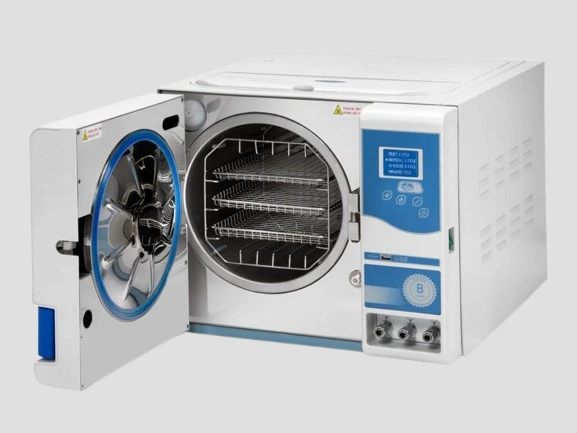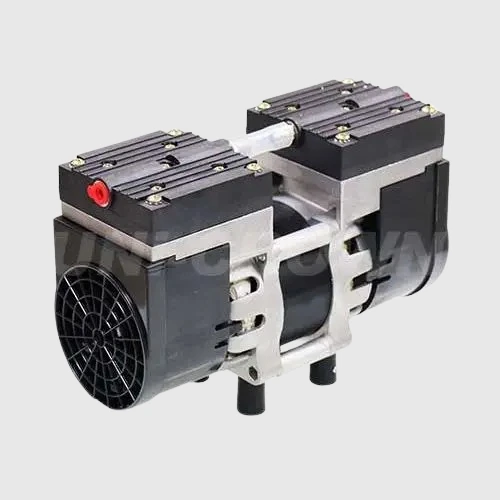- sales@biolabmarket.com
- +1 (469) 819-5592
Pumps are among the widely used equipment in the medical industry and for sterilizing medical instruments. They are utilized in hospitals, healthcare centers, clinics, and private practices.
One of the pumps that is widely used in these industries is the autoclave pump. This pump eliminates microbes, viruses, and bacteria from the surfaces and cavities of contaminated tools by creating a vacuum and injecting steam. The vacuuming process of the device’s chamber is performed by a vacuum pump.

What is an Autoclave Vacuum Pump?
A vacuum pump is a device whose function is to create a vacuum. This pump can extract air molecules and various gases from an environment and generate a pressure lower than atmospheric pressure in a vacuum chamber.
Sterilization of medical, dental, and laboratory tools and equipment is carried out using an autoclave. This device can eliminate viruses, bacteria, and fungi on objects by applying steam pressure.

Applications of Autoclave Vacuum Pumps
Vacuum pumps have various applications in the market, and one of the main components of an autoclave device is its vacuum pump. Pumps that can create a vacuum are used in devices like autoclaves and play a key role in their operation.
The main pumps typically used in autoclave devices are vacuum pumps, vacuum pumps, and water pumps.
Autoclave vacuum pumps are applied in various industries, the most important of which include:
- Food and pharmaceutical industries
- Medical industry: Sterilization of surgical instruments and medical equipment
- Dental industry: Sterilization of dental tools
- Petrochemical and chemical industries
- Beauty salons: Sterilization and disinfection of piercing, tattoo, and microblading tools
- Paper, cardboard, wood, and fiber industries
- Foundry, textile, and leather industries
- Medical and research laboratories: Sterilization of culture media and laboratory glassware
Types of Autoclave Vacuum Pumps
1. Recirculating water vacuum pump
2. Dry vacuum pump
3. Oil vacuum pump
These types of autoclave vacuum pumps can have various subcategories depending on the specific field of application of the autoclave device.
How to Replace an Autoclave Vacuum Pump
Vacuum pumps, in addition to their advantages, may also have some problems, such as maintenance and replacement issues.
If you intend to repair a pump, the first step is to identify the root cause of the problem before starting the repair.
In some cases, repairing the pump is not enough, and replacement is necessary—for example, when the pump diaphragm is torn, causing unusual noises. Always use specialists for repairing and replacing pumps.
Main Causes of Autoclave Vacuum Pump Failure
Common issues with vacuum pumps include:
- Leakage in the piping system
- High pump temperature or smoke
- Reverse pump rotation, gauge problems, or closed inlet valves
- High inlet pressure or coupling issues
- Clogged filters or blockages in the pump
- Electrical connection issues or mismatched voltage
Other common problems:
- Wear and damage to parts
- Low oil level, dust or particles entering the pump, stuck blades
- Pump vibrations, insufficient vacuum
- High power consumption and excessive noise
- Motor failure, low oil temperature, or high oil viscosity
Each type of vacuum pump—dry, liquid ring, or oil—has its own specific issues, so repair methods differ.
Maintenance and Extending the Life of a Vacuum Pump
- Timely oil replacement:
- Use standard oil recommended by the manufacturer.
- Replace oil at regular intervals to prevent reduced efficiency and damage.
- Prevent contamination and particle entry:
- Use high-quality filters suitable for operating conditions.
- Keep the surrounding environment clean to prevent dust and particle entry.
- Periodic inspection:
- Check oil level and quality (for oil pumps).
- Monitor filter status and cleanliness.
- Inspect connections and check for leaks.
- Follow manufacturer instructions:
- Strictly adhere to manufacturer guidelines for installation, operation, and maintenance.
- Use original spare parts approved by the manufacturer.
Common Problems of Autoclave Vacuum Pumps and Their Causes
- Unusual noises:
- Broken or cracked blades and rotor
- Vibrations due to loose parts or imbalance
- Worn bearings or internal parts
- Overheating:
- Low or poor-quality oil
- Blocked air pathways or filters
- Motor or cooling system issues
- Reduced suction power:
- Leaks in hoses or connections
- Clogged or dirty filters
- Blade wear or damage
- Mechanical problems in the rotor or other internal components
related content: vacuum pump price
